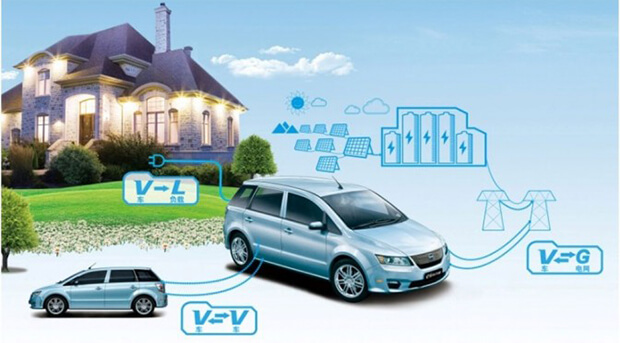Could Millions Of Electric Cars Power Your Home in the Future?
Electric cars could power your home
Could Millions Of Electric Cars Power Your Home in the Future by using electric car batteries to add power to the electric grid?
Just imagine it - millions of EVs (Electric Vehicles) charging the grid from their power excess and releasing back to society the unused electric power at peak hours.
It is believed also that car batteries could also be used as household battery packs, collecting and storing power from renewable installations.
How realistic though is this concept? Well, the idea is not particularly new as it has been around for about a decade now. So far, there has not been too many major breakthroughs though. Although there may be some level of enthusiasm for the concept, it looks like it will be many more years until such a breakthrough takes place.
It is estimated that by 2040, more than half of all new cars sold will be electric so there will be sufficient battery capacity to use in the electric grid. Also, cars can be recharged by underground power connectors on the road network which is also a way that the turning wheels of the cars can generate electricity back onto the grid.
There are issues involved which would need to be addressed as some industry insiders are concerned that when the grid sucks out juice from the car batteries, it could lead to increased stress on the cells, potentially damaging the car battery which would defeat the purpose.
If millions of cars are to act as battery packs for generating renewable electricity, people will need to change how they think in the future as these concepts need to be adopted by people and cannot just be achieved by technological breakthroughs.
A case in point is Nissan’s experiment with owners of its Leaf EV. Nissan offered owners of Leaf a means to adapt their car battery to power their homes. The benefit was a US$40 electricity bill every month. What happened? Over the six years since the start of the project, only 7,000 Leaf owners agreed to take part. That’s 7,000 out of 81,500 Leaf owners in Japan.
As for the right time to charge your EV so you get the lowest rates, Nissan again did a trial together with utility Tepco, this time with employees, asking 45 of them to install electricity chargers at their homes to monitor power demand on weekends. Participants were rewarded with Amazon shopping points for buying electricity when supply was highest—but it wasn’t enough to make them take advantage of the cheap juice. Only 10 percent completed the trial.
Finally, there is the simple question of money. If you want to get EV drivers on your side and convince them that it’s better for them to charge at peak production and discharge during peak demand, utilities will need to make it worth their while, only then would the chances of the concept becoming a reality would greatly improve. 
Author

Justin Kavanagh
Justin Kavanagh is a recognised leader
in automotive intelligence and vehicle
data supply to the entire motor industry.
He has almost 20 years experience in
building systems from the ground up.
As the Managing Director of Vehicle
Management System, he understands the
need and importance of trustworthy and
reliable vehicle history and advice to
both the trade and the public.
Follow me on LinkedIn
